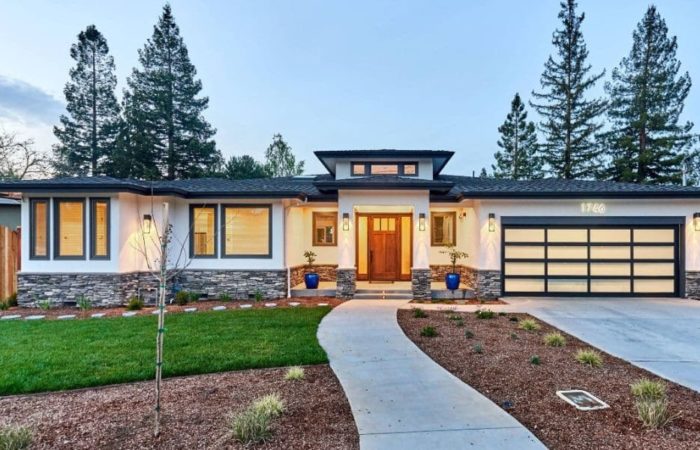Your Guide to the Stunning Greek Revival Architecture
Greek revival architecture is, as the name suggests, a style inspired by Greece and developed in the United States. It is historical and stunning and still popular in public buildings and homes across the U.S. today. Let’s explore the history of this style and what it’s defining features are.
What Is A Greek Revival House?
A Greek Revival house / architecture is a style of architecture that emerged in the United States and Europe during the late 18th and early 19th centuries. It is characterized by its adaptation of ancient Greek architectural elements and principles. This architectural style gained popularity in the early years of the newly formed United States, as the young nation sought to create a visual connection to the ideals of ancient Greece, which was seen as the cradle of democracy.
Greek Revival houses typically feature a symmetrical facade with a front-facing gable, often adorned with a pediment supported by columns. The columns, usually of the Doric or Ionic order, are a prominent feature of Greek Revival architecture. They are commonly found at the entryway, creating a porch or portico that extends across the front of the house. The use of classical motifs, such as friezes, dentil molding, and cornices, is also common in Greek Revival design.
The exterior walls of Greek Revival houses are typically made of brick or wood and may be painted white to resemble the marble used in ancient Greek buildings. The roof is often a gable or hipped roof, and windows are regularly arranged in a symmetrical pattern. The overall effect of a Greek Revival house is one of elegance, simplicity, and grandeur, evoking a sense of classical beauty and architectural harmony.
Greek Revival architecture had a significant influence on the development of American architecture during the 19th century and can be seen in many public buildings, mansions, and even smaller homes throughout the United States. It remains a popular architectural style today, and many buildings continue to be inspired by its timeless design.

Greek Revival House and Architecture
History of Greek Revival Architecture
Greek revival architecture is inspired by and based on the temples of Ancient Greece. During the first half of the 19th century, the style began popping up across the United States. There are a few theories as to why it showed up when it did. The most generally accepted theory is that during this time in the U.S., there was an influx of interest in ancient Greek art, culture, and philosophy, while at the same time the population was embracing the ideologies of Greece.
For example, since this was during the time of the Civil War, the North built these homes to symbolize the freedom of the Greek people (during their war with Turkey). The South used it to represent a culture built on a slave society.
Many of America’s large government buildings used Greek revival architecture. Notable figures like Thomas Jefferson even commissioned the style in designs for buildings like the Virginia State Capitol Building. Soon many public buildings emulated the style, from churches, to libraries, to homes. This became the first truly national style of architecture in the country.

The Virginia State Capitol Building.
Characteristics of Greek Revival Architecture
Greek revival architecture is most recognized for it’s vast columns and pilasters. The style is symmetrical and formal. The buildings are typically white, and bold and heavy. Building materials include stucco, wood, and sometimes stone. They are often painted white to resemble marble. In terms of roofing, they usually use low pitched gabled roofs. Finally, there are typically tall, double hung windows.
Greek revival architecture also uses elaborate entrances and front doors. The doors could be either single or double, but were paneled and surrounded by extensive decoration, including paneled sidelights and ornate trim.
What are some of the more famous examples of Greek Revival buildings?
The Greek Revival architectural style was popular in the 18th and 19th centuries, characterized by its use of ancient Greek architectural elements and proportions.
Here are some more famous examples of Greek Revival buildings:
- United States Capitol, Washington, D.C. (completed 1826): The iconic dome and neoclassical façade of the U.S. Capitol building reflect Greek Revival influences.
- Tennessee State Capitol, Nashville, Tennessee (completed 1859): This building features a monumental Ionic order façade and is considered one of the finest examples of Greek Revival architecture in the southern United States.
- Bank of Montreal Head Office, Montreal, Canada (completed 1847): Designed by British architect John Wells, this building is often referred to as the “Temple of Commerce” due to its Greek Revival design.
- British Museum, London, United Kingdom (completed 1852): While not exclusively Greek Revival, the museum’s grand façade incorporates classical elements inspired by ancient Greek architecture.
- Ashmolean Museum, Oxford, United Kingdom (completed 1845): The museum’s design features Greek Revival columns and proportions, showcasing the influence of the style on institutions in the United Kingdom.
- Old Royal High School, Edinburgh, United Kingdom (completed 1829): Also known as the New Parliament House, this building showcases Greek Revival architecture and was intended to serve as a new home for the Scottish Parliament (which never materialized).
- National Library of Greece, Athens, Greece (completed 1903): This building’s neoclassical design embodies Greek Revival elements, fittingly reflecting the country’s rich architectural heritage.
- Brandenburg Gate, Berlin, Germany (completed 1791): While not exclusively Greek Revival, this iconic gate incorporates neoclassical design features and was heavily influenced by ancient Greek architecture.
- Temple of Saint Sava, Belgrade, Serbia (construction began 1935): This massive Serbian Orthodox church was built in a Greek Revival style with a central dome and columns reminiscent of ancient Greek temples.
- Altes Museum, Berlin, Germany (completed 1830): Designed by Karl Friedrich Schinkel, this museum is one of the most important examples of Neoclassical architecture, including Greek Revival elements.
These buildings showcase the enduring influence of ancient Greek architecture and its revival during the 18th and 19th centuries in various parts of the world.
Is the White House Greek Revival style?
Yes, the White House in Washington, D.C., is often considered to incorporate elements of the Greek Revival architectural style. While it is not a pure example of Greek Revival, it does feature neoclassical design elements that were inspired by ancient Greek architecture. The White House was designed by James Hoban and was constructed between 1792 and 1800.
The White House’s neoclassical features include the use of columns, particularly on the south portico, which has six Ionic columns supporting a pediment. The overall symmetry, proportionality, and use of classical architectural elements in its design are characteristic of the Greek Revival style. However, it’s worth noting that the White House’s architecture also incorporates other influences, including elements from the Georgian and Federal styles.
In summary, while the White House is not exclusively Greek Revival, it does exhibit neoclassical and Greek Revival features in its design, which contribute to its iconic and timeless appearance.
Where is Greek Revival most commonly used?
The Greek Revival architectural style was most commonly used in the United States and Europe during the late 18th and 19th centuries but it can be found in various parts of the world. It gained popularity as a response to the ideas of democracy and classical aesthetics associated with ancient Greece.
The following regions were particularly significant for the prevalence of Greek Revival architecture:
- United States: Greek Revival architecture became a dominant style in the early to mid-19th century in the United States. It was often associated with civic buildings, government structures, and grand residences. Some notable locations with prominent Greek Revival buildings include Washington, D.C., where government buildings like the U.S. Capitol and the White House incorporated Greek Revival elements, as well as cities like Boston, New York, and Charleston.
- United Kingdom: Greek Revival architecture was popular in the United Kingdom during the late 18th and early 19th centuries. It was often used for public buildings, institutions, and cultural landmarks. Examples can be found in London, Edinburgh, and other major cities.
- Canada: The Greek Revival style was also influential in Canada, particularly in the early 19th century. Government buildings, banks, and other important structures often incorporated neoclassical and Greek Revival design elements.
- Greece: As the birthplace of classical Greek architecture, Greece itself was a significant location for Greek Revival design. However, in this context, Greek Revival was more about the continuation of traditional architectural forms than a revival in the same way it was in other regions.
- Germany: Greek Revival architecture had an impact in Germany, especially during the early 19th century. Berlin and other cities incorporated neoclassical and Greek Revival elements into public buildings and cultural institutions.
- Other European Countries: Greek Revival influence extended to other European countries as well, with examples in France, Italy, and beyond. However, its prominence varied from country to country.
The Greek Revival style was often used for government buildings, museums, libraries, universities, and public monuments, reflecting a desire to link modern democratic societies with the ideals of ancient Greece. Its popularity waned as architectural tastes evolved, but its legacy can still be seen in the numerous surviving buildings and landmarks that continue to inspire and captivate to this day.
Greek Revival Interior Design
Greek revival in interior design is usually referred to as “Neo-Grec.” Greek inspired sofas and the “klismos” chair were popular. Heavily decorated, heavy furniture pieces like armchairs are a big part of the style.

A Greek revival sofa and a Klismos chair.
In ancient times, Greek buildings and interiors were actually painted in bright colors. The reason we see them all as white and neutral colors now is because the paint has worn away over the centuries. However, if you want to decorate in the original Greek style, decorate your interiors with bright colors. If you want to decorate in the true revival style, rather than sticking to the original, choose lots of neutral earth tone colors.
While you’re decorating in the Greek style, whether original or revival, browse some of our beautiful Greek embroideries and textiles and see if any of them speak to you. They may just be perfect for your Greek revival decor.
Beautiful Greek pieces from the Nazmiyal Collection:
This architecture blog about the Greek revival style house and architecture was published by Nazmiyal Antique Rugs.





